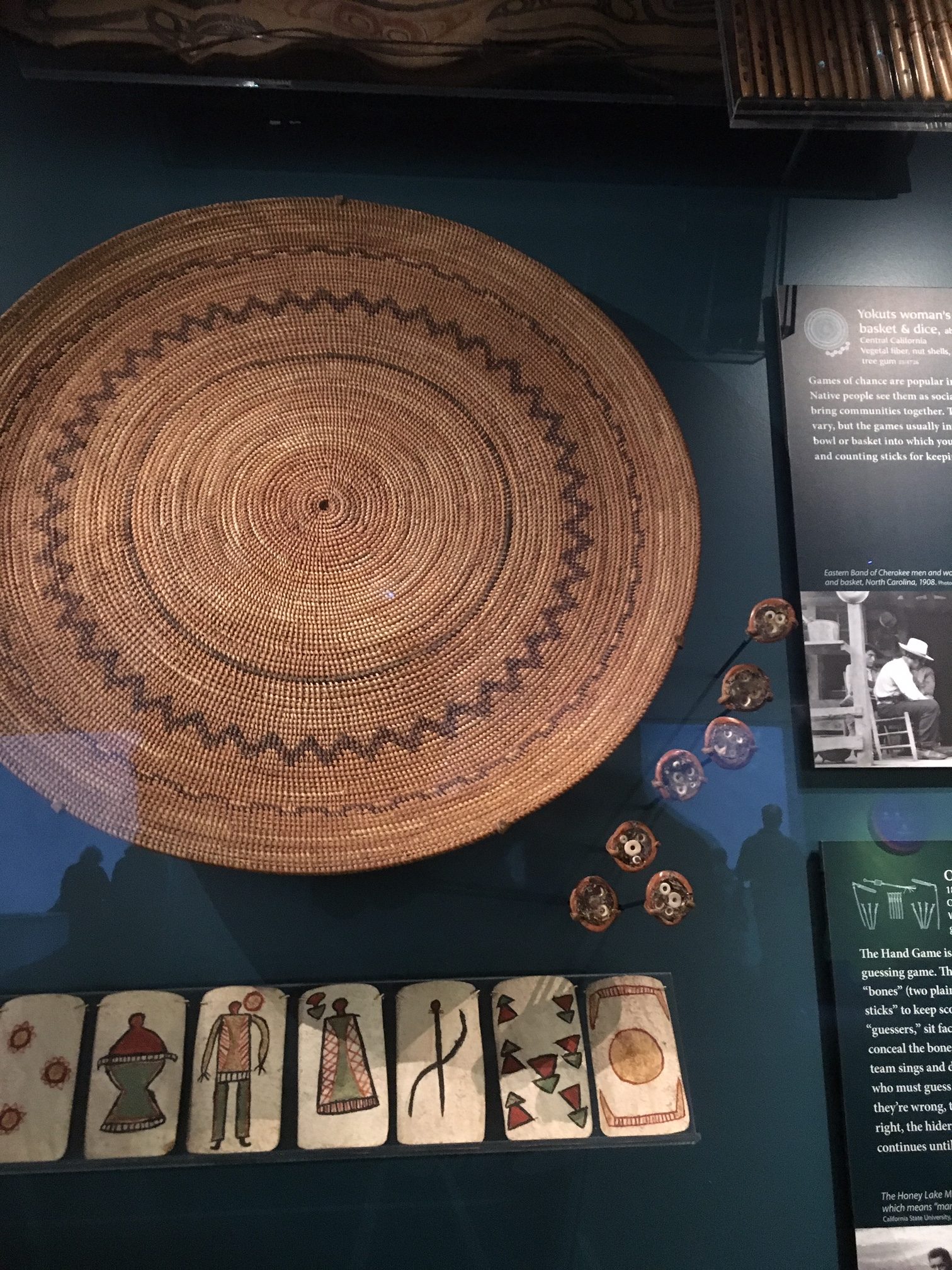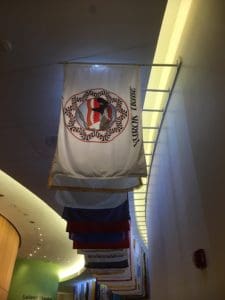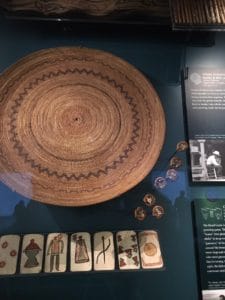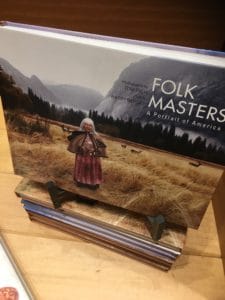
A California Eye at NMAI
Essay and photos by Terria Smith

I recently visited the Smithsonian National Museum of the American Indian (NMAI) in Washington DC after not having been there for more than 10 years.
For those who have never been there, NMAI opened in 2004 and is “dedicated to acting as a resource for the hemisphere’s Native communities and to serving the greater public as an honest and thoughtful conduit to Native cultures—present and past—in all their richness, depth, and diversity.” Thus, they have an enormous collection of artifacts, publications, recordings, photos, artworks, vessels, and many other things that one cannot even imagine from all over the Western Hemisphere.
Of course, being a California Indian as well as the editor of News from Native California magazine, I have a heightened awareness for all things California. Naturally, I carried this awareness when I visited NMAI. Thus, I decided that I would spend my time there trying to see how much the museum had on exhibit that focused on California tribal nations and cultures. To my pleasant surprise, the museum has quite a lot.
One of the first things I noticed was our California nations being represented among the tribal flags that hang around the museum. Those that I spotted were the the Pechanga Band of Luiseño Indians, Rincon Band of Luiseño Indians, Scotts Valley Band of Pomo, Shingle Springs Band of Miwok Indians, Wiltern Rancheria, and the Yurok Tribe. I am certain that there are many more there as well.

I really got lucky, as there is a new exhibition focusing specifically on a California tribal nation with Section 14: The Other Palm Springs, which opened in March 2019. The exhibit, illustrates a land struggle that the Agua Caliente Band of Cahuilla Indians had between the 1940s and 1960s in their homeland of Palm Springs.
As I kept wandering I noticed a display titled “As We Grow: Traditions, Toys, Games.” There is a Yokuts women’s gambling basket with walnut dice there. In another display that focused on animals there is a pretty little butterfly basket from Pit River, which is dated at around 1900. A delightful contemporary piece of art – which is in yet another display – are an amazing pair of beaded patent leather shoes created by Jamie Okuma (Luiseño/Shoshone-Bannock/Okinawan-Hawaiian).


There is more beauty in four California tribal baskets amongst a very sad section of the exhibit Nation to Nation: Treaties Between the United States and American Indian Nations. The section is called “1851: The California Unratified Treaties.” The focus is on the land and rights that were lost to tribes in California, as well as the atrocities that our ancestors faced during the mission period and the Gold Rush. But the beauty in this section comes from baskets of the Kumeyaay, Maidu, Pomo, and Yokut peoples.
One striking exhibit at NMAI is Our Universes: Traditional Knowledges Shapes Our World. This exhibition features worldviews and philosophies related to the creation and order of the universe from eight different tribal groups. Included among the philosophies is that of the Hupa people.
Last, when visiting the NMAI gift shop lots of results for California tribes are also available – particularly in the area of books. Titles including An American Genocide (Benjamin Madley), Mukat’s People (Lowell Bean), and Native Americans of Riverside County (Clifford Trafzer and Jeffrey Smith). But what was most delightful was seeing an image of Julia Parker on the cover of the book Folk Masters (photos by Tom Pich, and text by Barry Bergey).

Overall, I was so pleased that I didn’t feel left out. California was well represented.
For more information about the Smithsonian National Museum of the American Indian and the exhibits there, visit https://americanindian.si.edu/



